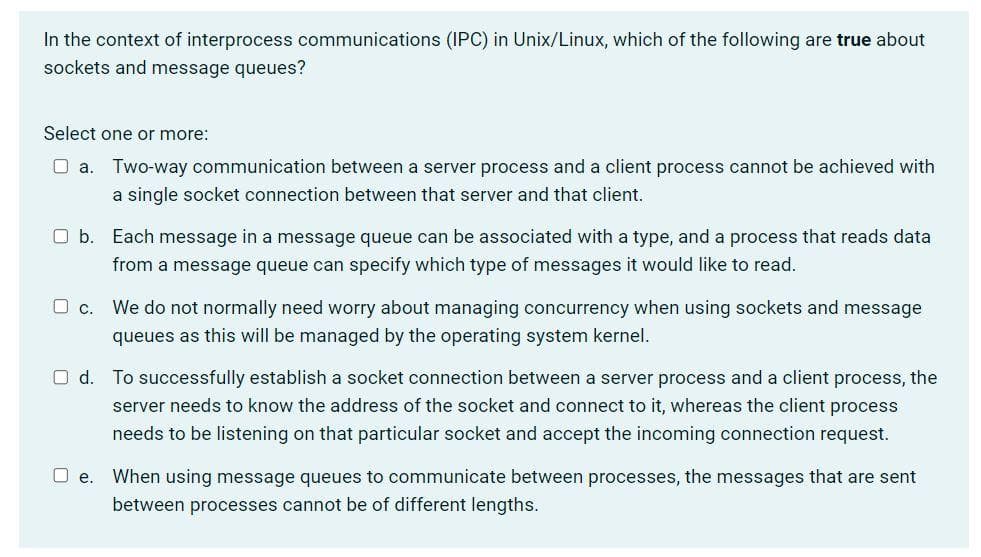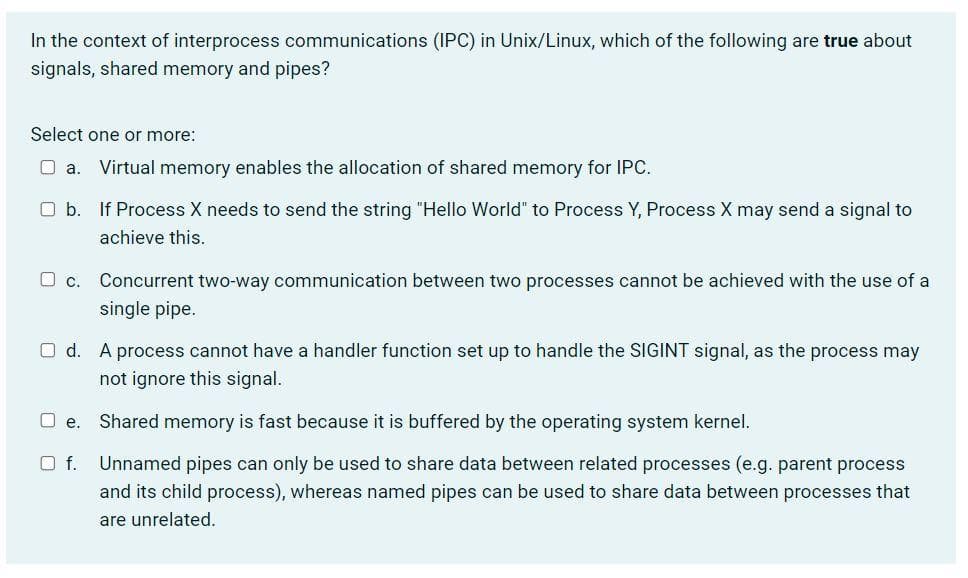Select one or more: O a. Two-way communication between a server process and a client process cannot be achieved with a single socket connection between that server and that client. O b. Each message in a message queue can be associated with a type, and a process that reads data from a message queue can specify which type of messages it would like to read. We do not normally need worry about managing concurrency when using sockets and message queues as this will be managed by the operating system kernel. O d. To successfully establish a socket connection between a server process and a client process, the server needs to know the address of the socket and connect to it, whereas the client process needs to be listening on that particular socket and accept the incoming connection request. O e. When using message queues to communicate between processes, the messages that are sent between processes cannot be of different lengths.
(Please all solve the question)
Access Matrix is a security model of insurance state in PC framework. It is addressed as a grid. Access grid is utilized to characterize the freedoms of each interaction executing in the area concerning each item. The lines of grid address areas and segments address objects. Every cell of grid addresses set of access freedoms which are given to the cycles of area implies each entry(i, j) characterizes the arrangement of tasks that an interaction executing in space Di can conjure on object Oj.
So the correct options are option 2nd and 4th
2nd - In a given access matrix,the owner of the file also have all other privileges.
4th - When capability lists are used, objects become domain


Trending now
This is a popular solution!
Step by step
Solved in 2 steps with 1 images









